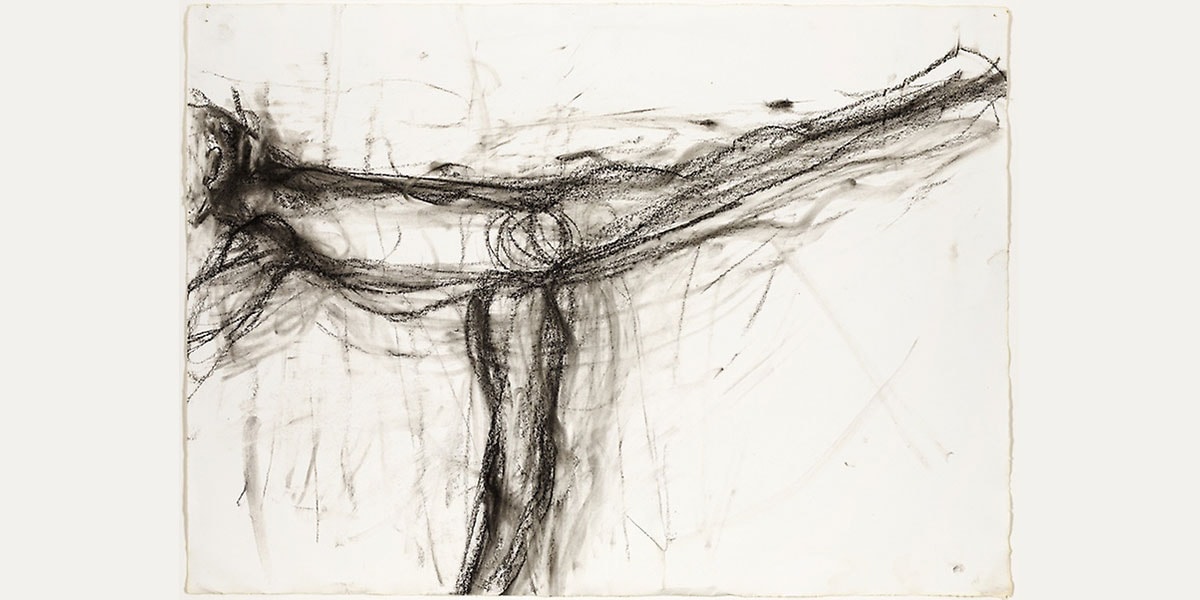The recent death of the great American painter Susan Rothenberg (1945-2020) sparked thoughts of how time in solitude might be productively spent. For Rothenberg, especially in her more recent paintings, the studio itself provided a subject as rich, fertile and slippery in its meanings as her better known paintings of equine forms from the mid-1970s. Rothenberg’s 70s paintings kicked over the divide between the abstract and the figurative, a divide that, as the current exhibition of Titian’s poesie paintings at the National Gallery definitively proves, has never been one painters have taken very seriously. Looking back over the debates around the resurgent figuration of other painters of the time (in Italy, Germany and the States, mainly), it’s easy enough to shake one’s head at the force of feeling that led to such revivalist masters as Philip Guston being ostracised from the New York art establishment; but that’s hindsight playing its tricks again. The fact is that there was something disturbing about the revival of recognisable imagery in painting of the time: a reminder, perhaps, that art’s field of play only looks open until its limits are tested. The same is true of the art of our time, in which the notion of ‘anything goes’ is easily shown to be much less laissez-faire than it might seem.
Rothenberg’s ‘studio’ paintings (such as Red Studio or Yellow Studio, both 2002-3) show the artist’s working spaces as places of contemplation, production and, most engagingly of all, procrastination. In the latter, the artist’s disembodied hands read a book under lamplight while a long dog stretches out happily (despite bearing some resemblance to the famous petrified hound in Pompeii). In other words, it’s a studio where not much is going on (so maybe the permanent stillness of the Pompeiian dog makes some sense in this light). Rothenburg’s jittery, loose, dispersed facture, though, makes of this indolence an arena of potential energies. Like many of her paintings, this one transformed in the making; as the artist herself put it, “I find things out by stumbling on them”. Not making, then, is the beginning of making. A semi-fictional historical parallel helps put this in context. Some assistants of Leonardo da Vinci’s, working on The Last Supper, expressed shock at the maestro coming in to the refectory where the fresco was underway, taking a look, scratching his beard, and leaving without picking up a brush. He never works, one says; that is work, says another. This is the nature of creative work: a lot of it doesn’t look like work. That is the great lesson of Rothenberg’s studio paintings. The road to creativity is paved with boredom.
That, too, is one of the great lessons of the work of Rothenberg’s husband, Bruce Nauman, whose 2001 work Mapping the Studio I (Fat Chance John Cage) consists of seven projections showing the artist’s studio at night, illuminated by infrared light. 5 hours and 45 minutes later, the most exciting event is the appearance of a mouse, followed by a cat. I’ve seen this piece many times and never, somehow, been able to tear myself away. It’s something about the studio as a space of a potential that cannot be willed. You have, quite simply, to sit and wait. The waiting, it turns out, is everything.
Written by Ben Street.Lecturer, Christie’s Education
__

